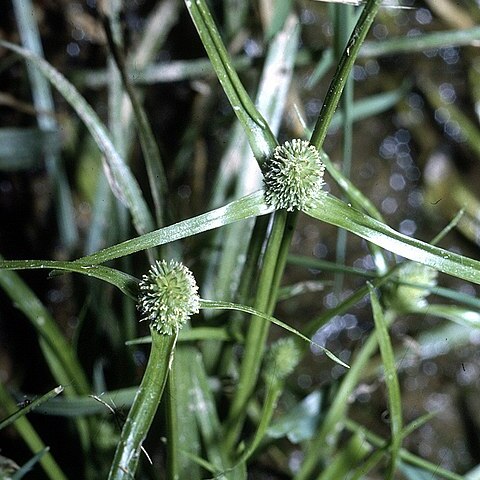Annual, cespitose, 4-40 cm. high, with leaves (2-3 mm. wide) usually shorter than the slender culms; heads 1-3, confluent, ovoid or cylindric, 4-6 mm. long, compressed; scales membranous, pale green, strongly nerved, the keel prominently toothed; stamens 1 or 2; achene elliptic, 1-1.5 mm. long, pale brown, minutely papillose.
An annual sedge. It is a herb that forms tufts. It has short underground stems or rhizomes. The stems are swollen at the base. They grow 30-40 cm high.
Numerous, small, green and white, 3–4 spiked, pyramidal heads
Caespitose

